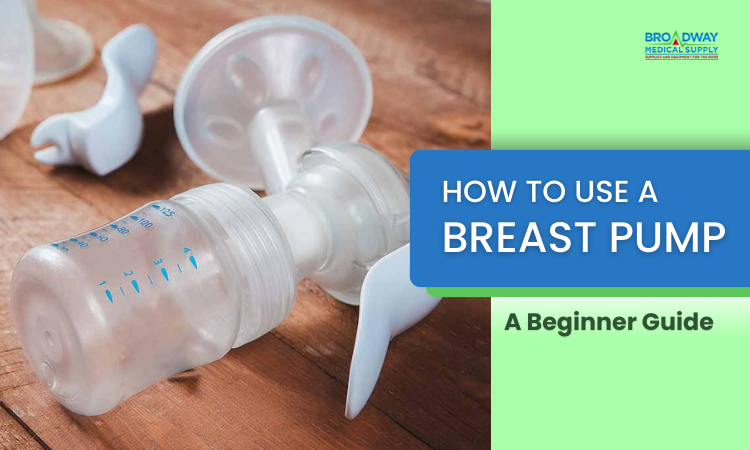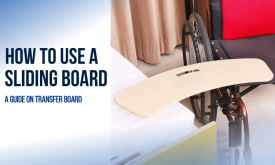For new mothers, knowing the benefits of breastfeeding is crucial. While our body is adjusting to the new change, the addition of a double breast pump adds to the comfort and better milk supply. This ensures the good health of the mother and a proper supply of nutrition for your child. While being a mother is a process of learning something new every day, how to use a breast pump is also something you need to learn. There are different types of breast pumps that you can use as per your convenience and requirements. All the types ensure complete safety and comfort for the mother to feed their baby with sufficient milk every time.
What is a Breast Pump
The breast pump machine is a scientific development that helps aid lactating mothers to pump breast milk for their newborn and young babies smoothly. The machine is a simple device that replicates the pumping pattern of the child to stimulate the natural start of the letdown of the milk. The machine is available in both manual and electric form with a single and double breast pump. Using the best hands-free pump is often considered a great option for new moms to set a practice for feeding and get used to breast stimulation for milk production. It is also helpful for those who need to store breast milk in case they can’t be there physically available during their baby's feeding time.
Different Types of Breast Pumps
Manual Breast Pump
A manual breast pump requires a bit of physical effort to pump milk from a lactating mother’s breasts but gives you complete control of the pressure and comfort. It has a small liver that helps create suction and control the pressure for smooth milk pumping. There are two convenient modes. Most wide-neck bottles are easily compatible with the pump. A manual breast pump is ideal for occasional use and handy while traveling.
Double Electric Breast Pump
The lightweight, portable double electric breast pump is perfect for regular use and meets the milk supply needed for your child. The pump has soft and flexible flanges that fit smoothly on your breasts and create natural stimulation. It offers different pumping styles and suction modes to adjust your comfort milk supply needs. Being dishwasher safe and easy to clean, the double breast pump speeds the process and allows you to empty both breasts simultaneously.
Hands Free Double Electric Breast Pump
Similar to the double electric breast pump, the hands free feature makes it easy for you to work while pumping milk. Its compact design with portable features makes it an ideal choice for working and multi-tasking mothers.
How to Use a Breast Pump?
Understand the Functioning
Knowing that a breast pump cannot stimulate the same feeling as your baby does is the first step in using a double breast pump. Manual, electric, and hands free breast pumps- all three have different functions you need to know before you start pumping milk from your body. The machine mimics a similar suction pattern your child performs while breastfeeding.
Ensure Hygiene
Once you know the functioning, it's time to start pumping milk. But before that, following hygiene practices is vital for your child's health. Start with washing your hands and wipe your breasts with a wipe. Also, clean the breast shield for complete safety.
Get Comfortable
Choose a comfortable position, as this can help better stimulate milk while the double breast pump is in working mode. Being uncomfortable can make the procedure stressful and painful, making it an unpleasant experience.
Assemble the Breast Pump
Before you sit and are ready to pump, make sure to assemble all the components of the manual or double electric breast pump. Whatever pump mode you are using, read the guide manual to understand the proper functioning and join the different parts for a smooth pumping process. The correct assembly of the pump, especially the electric breast pump, prevents any unwanted mishaps, spillage, and injury while using the pump.
Adjust the Breast Shield
Once you are in a comfortable position and have assembled the double breast pump, carefully position the breast shield over your nipples to create proper suction. The shield will create a seal, making sure the stimulation is proper. Ensure that it is comfortable and not painful.
Create Mood for Feeding
While you are all set for pumping the milk based on the different modes available to choose from, sometimes it is possible that the milk is still not pumped. A reason for this can be the body's habit of letting down milk in the physical presence of your baby. Emotional release plays a vital role in stimulating milk. To create the mood, play and talk with your baby, or use photos and videos to allow a good flow of milk.
Start Pumping
If using a manual breast pump, use the liver to adjust the pumping pressure and keep pumping until both your breasts are empty. In the case of a double electric breast pump or hands-free pump, adjust the pressure and pumping mode for smooth stimulation. Ensure to pump until the milk flow reduces to ensure your breasts are empty.
Empty Both Breasts
Whether using a single or double breast pump flange, ensuring that both breasts are empty after the pumping session is vital. If there is milk still left, it can cause pain and other problems. A common reason for breast engorgement is the milk collected in the breast, leading to a reduced supply of breast milk for your growing child.
Store the Milk
After milk extraction, storing it is of utmost importance. Store in labeled and clean breast milk containers to maintain the milk quality for your child's good health.
How Do You Clean a Breast Pump?
While knowing how to use a double breast pump for pumping milk is vital, understanding the cleaning process is equally essential to ensure the well-being of mother and baby. Here is how to clean a breast pump before and after use -
Before Use
Before you start using the manual breast pump or electric one, cleaning the flanges and the bottle to store the milk is needed. Cleaning before is even crucial if two lactating mothers share the pump. Use a clean cloth to wipe the surface and corners of the machine. Also, ensure that the skin is cleaned before fitting the flanges of the pump. This ensures safe and hygienic practices for the better health of your child.
After Use
Disassemble the Breast Pump
Once the milk is pumped, turn off the machine if using a double electric breast pump. Disassemble all the parts carefully and keep aside the ones that have come in direct contact with the breast milk. Wipe the rest of the parts using a medicated wet wipe or a cloth. Use a sanitization liquid that is safe for use with a double electric breast pump. Do not wet the parts around the battery.
Rinse the Pump Kit
1. Clean with Hands
- Fill the Basin with Warm Water: Start with filling the wash basin dedicated to cleaning and sterilizing purposes with some warm water. Ensure the basin is already cleaned before you prepare it for washing the double breast pump. Use a mild soap that is free of chemicals and artificial fragrances. The diluted solution of soap and water should be warm enough to remove all bacteria but not too hot that it damages the parts.
- Place the Pump in the Basin: Take the disassembled parts of the double electric and manual breast pump that can be cleaned with water. Soak them in the solution for some time. Ensure all the parts are submerged in the water.
- Scrub the Parts: After soaking, take a soft bristle brush and scrub the double breast pump parts. From flanges, pipes, bottles, and all other parts, carefully clean each part of the breast pump. Scrubbing ensures that no residue is left in the corners of the parts.
- Rinse Thoroughly: Remove the parts from the soap water and rinse them under clean water. You can use water at a regular temperature for rinsing. Ensure you use filtered water to keep the bottle free from any chemicals in tap water.
- Dry Completely: Once cleaned, allow the double breast pump parts to dry completely. Drying ensures that no moisture can cause bacteria buildup. It even ensures that the life of the parts is increased and hygiene is maintained. You can even dry them under sunlight to help quick drying.
2. Clean Using Dishwasher
- Place the Parts: Place all the parts, like flanges, breast tubes, bottles, cups, etc., in the dishwasher. Be careful while placing them to ensure the parts are not damaged and the shape is retained.
- Set and Turn on the Dishwasher: Set the dishwasher settings on the double breast pump machine as per the instruction manual. If possible, use warm water when cleaning in the dishwasher to allow deep cleaning of the parts.
- Remove From Dishwasher and Dry: Once the dishwasher rings the alarm, remove the parts and allow them to dry.
An additional sanitization step can be added to better cleaning after washing, whether in the dishwasher or by hand. To sanitize, you can soak the parts in high-temperature water. This will disinfect the parts and allow for safe breast pumping sessions.
When Do You Need a Double Breast Pump
Breast milk is the main nutrition for a child's growth. It can be difficult for new mothers to adjust to the process. Using a double breast pump to adjust to the process or when you are away for long periods can ensure meeting your child's milk demands. While the breast pump ensures an adequate supply of milk, it even helps prevent breast engorgement and mastitis in lactating women.
The double breast pump is a medical device that helps lactating mothers meet their child's milk supply needs while aiding their health benefits. Ensuring that the quality of the device is uncompromised helps in preventing rashes and breast tissue injury while maintaining proper suction and stimulation of breasts. Broadway Medical Supply brings a wide range of breast pumps, including manual, electric, hands free, single, and double breast pumps that ease lactating mothers with smooth and effortless functioning features.
Frequently Asked Questions (FAQs)
1. What to Know Before Buying a Breast Pump?
When you choose to buy a breast pump, the first thing to do is understand the need and the types available in the market. While manual and double electric breast pumps are very common types of pumps, looking for various features helps aid the comfortable experience. Finding the perfect fit of flanges, different pumping and suction modes, material, pumping duration, hands free pump, etc., are a few features that can help bring ease when pumping milk. Also consider the additional supplies that are offered within the pack when buying an electric or manual breast pump.
2. How Long Should Each Breast Pumping Session Last?
The pumping session for milk differs from person to person. While women might feel that 2-minute session of pumping is enough, some might require a longer period to empty their breasts. It even depends on whether you are using a manual or double electric breast pump. Using a double breast pump is advisable if you produce more milk and have less time. Even with a single pump, the maximum duration should not exceed 20 to 30 minutes. You can increase the frequency of sessions if needed.
3. Do Wearable Pumps Cause Clogged Ducts?
Wearable or hands-free breast pumps allow for a multi-tasking experience when using the machine. It allows the mother to let down the milk flow and collect it in the attached bottle while doing the regular chores. While it is beneficial, excessive pumping time can cause the ducts to clog. The frequent change in pressure affects milk production and restraints the breasts from emptying completely. Always be mindful of the duration of use and consult a doctor if you notice any irregular symptoms while using an electric or manual breast pump.
4. How Do I Clean and Sterilize Breast Pump Parts?
There are many ways to clean a breast pump. Considering a manual or double electric breast pump is essential before cleaning and disinfecting the pump. Always read the manual to understand which parts can be washed and which must be kept away from water. Generally, steaming, boiling, soaking, and using a dishwasher are a few ways to clean and sterilize the breast pump parts.









